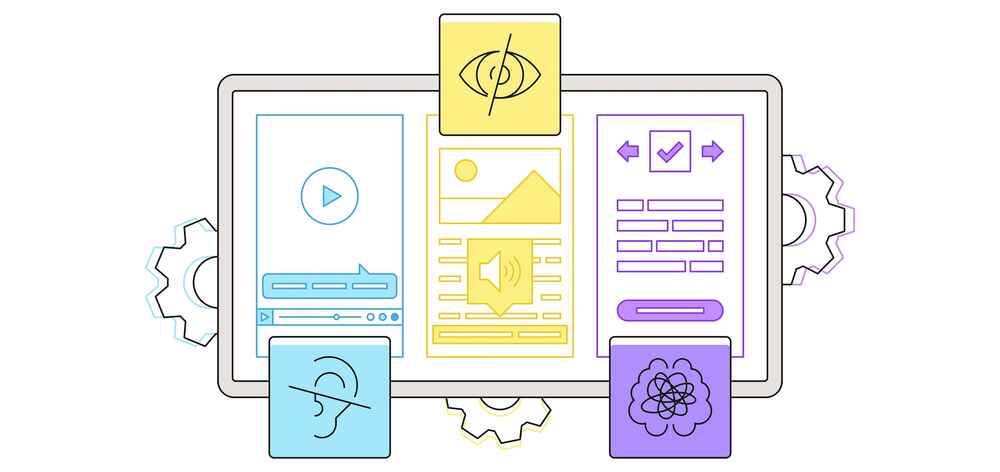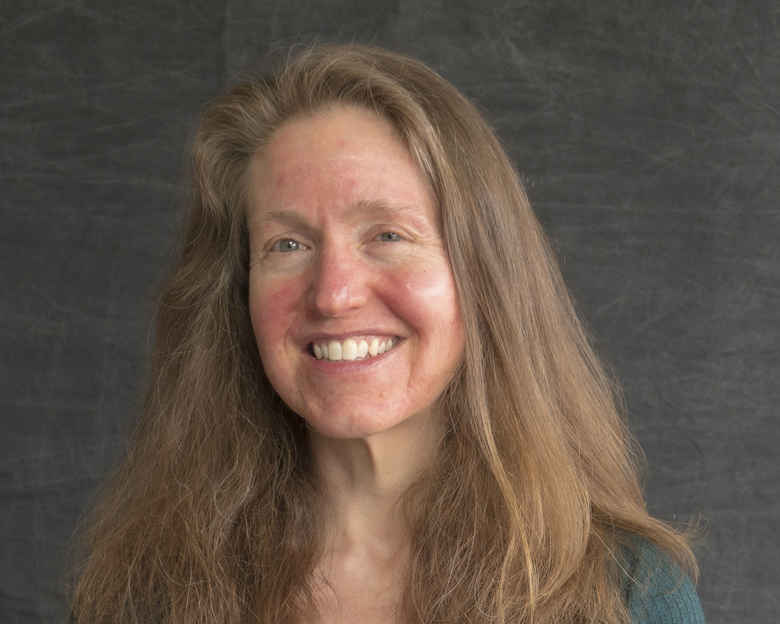
Imagine your walk to your office, and think of all the design choices along the way that support members of the campus community who have disabilities: curb cuts in the sidewalks, a wheelchair ramp running alongside the steps, Braille lettering on the office signs, closed captioning on the news broadcast playing in the student lounge. We take these for granted, along with the belief that people with disabilities have the right to participate fully in the community.
What you might not realize is that accessibility barriers also exist within our digital community—and we are all responsible for identifying and removing them so everyone can participate in this growing segment of our community. The University of Missouri System recognizes this; UM System 600.090 Digital Accessibility Policy states:
The UM System is committed to providing and supporting information technologies and digital communications that are accessible to all users, including those with disabilities, and to meeting or exceeding the requirements of state and federal law, including the Americans with Disabilities Act and Sections 508 and 504 of the Rehabilitation Act.
Even if you are already familiar with digital accessibility, you might have some misconceptions about it. Let’s break those down:
“I only have to worry about accessibility if I get a request for accommodations.”
Many students who would benefit from accommodations do not request them but nonetheless would benefit from an accessible learning environment. Why is that?
- Not all students have a diagnosis, and a formal diagnosis can be expensive and time-consuming. The student might not have connected their symptoms to something that can be diagnosed or treated, especially with many cognitive conditions, or they might have been told they need to work harder or just focus.
- Those who received accommodations in secondary school might not know they can still get them in college or want to prove they can succeed without those accommodations.
- Many students have experienced negative responses from faculty and peers, including instructors who refused to honor the accommodation request.
Also, bear in mind that disabilities can be sudden or temporary. Think of a student who gets an eye infection that temporarily reduces vision, or an ear infection that impedes hearing, or breaks an arm and suddenly has difficulty writing or using a mouse with their dominant hand.
Finally, “accommodation” implies a last-minute change to make room for a few specific students. “Accessibility” means creating a space that is fully available to all learners from the start. Disability activist Cordelia McGee-Tubb likens the difference to baking blueberry muffins: It is almost impossible to add the blueberries after the muffins have been baked, but when the blueberries are added during the mixing process, they melt deliciously into the muffins.
“Digital accessibility benefits only a few students. It’s not worth doing.”
According to the National Center for Educational Statistics, as many as 1 in 5 undergraduate students and 1 in 10 graduate students have a disability. To break those numbers down, here are statistics from the most recent National College Health Assessment from the American College Health Association, with over 78,000 students from 125 institutions responding:
| Condition | Percentage |
|---|---|
| ADHD - Attention deficit/hyperactivity disorder | 14.2% |
| Autism spectrum | 3.3% |
| Deaf/hearing loss | 2.2% |
| Learning disability | 4.6% |
| Motor disability | 1.4% |
| Blind/low vision | 3.5% |
| Speech/language disorder | 1.0% |
Again, these are reported numbers and don’t account for those who might not have a formal diagnosis.
Also, remember those curb cuts mentioned earlier as part of making our physical spaces accessible? Consider who else might use those curb cuts, including bicyclists, parents pushing strollers, or a worker with a wheeled briefcase. Many of the best practices for digital accessibility are like these curb cuts, providing benefits for those who don’t necessarily need them. For example, 20% of viewers enable closed captions while watching a video, but only 20% of those viewers are hearing impaired (Klein, 2022). Those viewers might be watching in a language they don’t speak fluently, or they might be in an environment where they cannot turn on the volume, or they find that captions improve their focus.
Perhaps my favorite “curb cut” of digital accessibility is using defined heading styles in Microsoft Word. Breaking up content with headings benefits neurodivergent readers, and defining the headings is necessary for anyone using text-to-speech technology. As a bonus, using heading styles in Word will streamline the formatting process, especially if you decide to change the formatting style of one of your heading levels; you no longer have to review your document to update each heading. Headings in Word can also be used within the navigation pane and can generate a table of contents for the document.
“Digital accessibility is difficult!”
You do not need advanced computer skills to create accessible documents or Canvas pages. Some of these skills will simplify your work, while others require just an extra step or two when you create a new document.
In my experience, many of us were never formally taught how to use Word or PowerPoint. We were expected to pick it up as we went along. We fumbled around, and we figured out how to create the documents we needed—documents that looked like other, similar documents we’d encountered. However, our methods haven’t necessarily been the most efficient, and they almost certainly were not centered on ensuring accessibility. So be patient with yourself if digital accessibility is new to you!
"I don't know where to start!"
I recommend starting by running the availability accessibility checks whenever you create or update your class materials. These checks will flag potential barriers and show you how to resolve them. The more you run these checks, the more familiar you will become with the best accessibility practices, and you’ll start incorporating more of them from the outset when you create new documents.
“There’s no support for learning digital accessibility!”
At Missouri Online, we are so committed to digital accessibility that it is a required component of our Quality Course Review (QCR) process. Your course cannot pass a QCR if your materials are not accessible. However, because we realize that accessibility is new to most of our faculty, we provide a variety of resources to guide you.
First, you can find just-in-time help from the Accessibility Guides within the Missouri Online Knowledge Base.
Next, we’ve created two “sprint” mini-courses, Designing Digitally Accessible Documents and Digital Accessibility for Canvas. Each of these explains the steps toward creating digitally accessible materials and how these steps support accessibility. After completing each one, you will have made significant progress toward addressing accessibility barriers in your teaching materials.
Missouri Online already supports UDOIT (pronounced “you-do-it”) to help ensure that Canvas sites do not present barriers to students who might have disabilities. In July 2024, we will launch a pilot of an upgraded version, UDOIT Advantage. With UDOIT Advantage, you will be able to check and fix documents uploaded to your Canvas site and even generate alternate file formats for those documents; for example, converting an inaccessible PDF file to an accessible file or even an MP3 file the student can download.
Finally, Missouri Online’s instructional design team is here to help! Please reach out if you’d like one-on-one help with accessibility or an accessibility workshop for your department.

